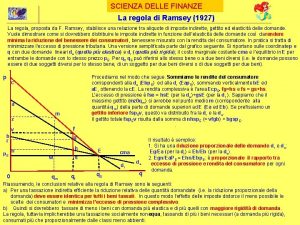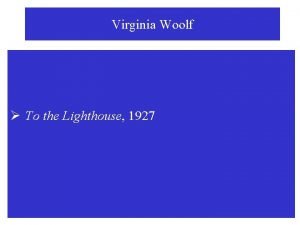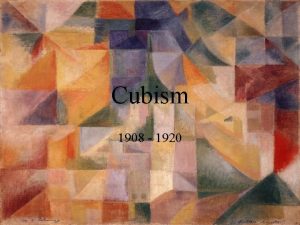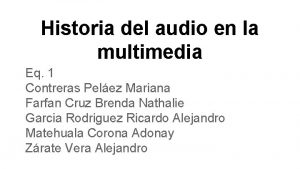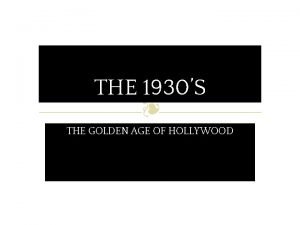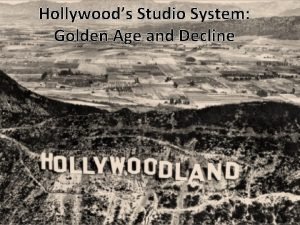Hollywoods Golden Age 1927 1947 Key Features From














- Slides: 14

Hollywood’s Golden Age 1927 -1947

Key Features • From silent to sound production • Consolidation of the studio system • Establish official regulatory organization (MPAA) • Changes in the look/technique of movies • … and movies & America

From Silent to Sound • The Jazz Singer (1927) • “You ain’t heard nothin’ yet” (* clip)

• Sound conversion complete by 1930 • box office up 50% • proving again: • $ = giving people what they want • 1938: ~80 million going to the movies every week • today’s numbers


The Studio System • Vertical integration (top-down) • Major studios maximized profits by controlling each stage of a film's life • Pre-production, distribution, and exhibition

The Studio System… • "The Big Five" • owned vast real estate for elaborate sets • set the exact terms of films' release dates, locations… • Owned/operated the best movie theaters (movie palaces) • decided things like: which sound/tech systems • actors and actresses

• “The Big Five” • • • Warner Bros. Paramount 20 th Century Fox Loew's (MGM) RKO (Radio-Keith-Orpheum)

• Controlled which/when films were seen • A-level films: • “it” stars, lavish productions • only seen in studio-owned, first-run theaters • B Movies

The Rating System • 1922, producers create committee • Mostly for public-relations • 1930, adopted the Motion Picture Production Code • guidelines on acceptable/unacceptable subject matter • came about because… art can influence the morality of those that consume it (assumably for the worse) • 1934, became mandatory • (1968 replaced in by the MPAA rating system) • This Film Is Not Yet Rated *


The Look of the Hollywood Movie • period of conformity, not innovation • giving people what they wanted • movies stressed the values of the time • Pre-WWII: heroism, family, citizenship, etc. with some comic relief • Est. new film genres • The musical, screwball comedies, gangster & war films

• Citizen Kane (1941) changes it all • Orson Welles’s film revolutionized film • storytelling success: a complex plot told by 7 narrators (not all reliable) • historical success: 7 months before Pearl Harbor – antifascist message • cinematic success: innovative techniques and will influence the structure and pace of nearly all movies that came after

Homework (s) DUE TOMORROW, 8 pm (even if you are absent on Tuesday!) - Read a little about the film Citizen Kane (1941) and its director Orson Welles - Then, before 8 pm on Wednesday (10/10), add one fun fact you learned about the film/director here. - Write the fun fact (and “fun” isn’t specific, it can be interesting, surprising, weird, intriguing, etc. ) in your own words; copying and pasting info will not suffice. - And please don’t send the first fact you find, read a bit – if your fact is unique, you’ll be rewarded.
 Golden age of aviation 1927-1939
Golden age of aviation 1927-1939 Iron age dates
Iron age dates Iron age bronze age stone age timeline
Iron age bronze age stone age timeline What are the key achievements from the islamic golden age
What are the key achievements from the islamic golden age Regola di ramsey
Regola di ramsey To the lighthouse (1927)
To the lighthouse (1927) Tanssija 1877-1927
Tanssija 1877-1927 Guerra civil china 1949
Guerra civil china 1949 Juan gris (1887–1927)
Juan gris (1887–1927) 1950-1927
1950-1927 Validty def
Validty def Dali sacrament of the last supper golden ratio
Dali sacrament of the last supper golden ratio Golden ratio and golden rectangle
Golden ratio and golden rectangle Golden age of hollywood 1930s
Golden age of hollywood 1930s Golden age of japan
Golden age of japan




